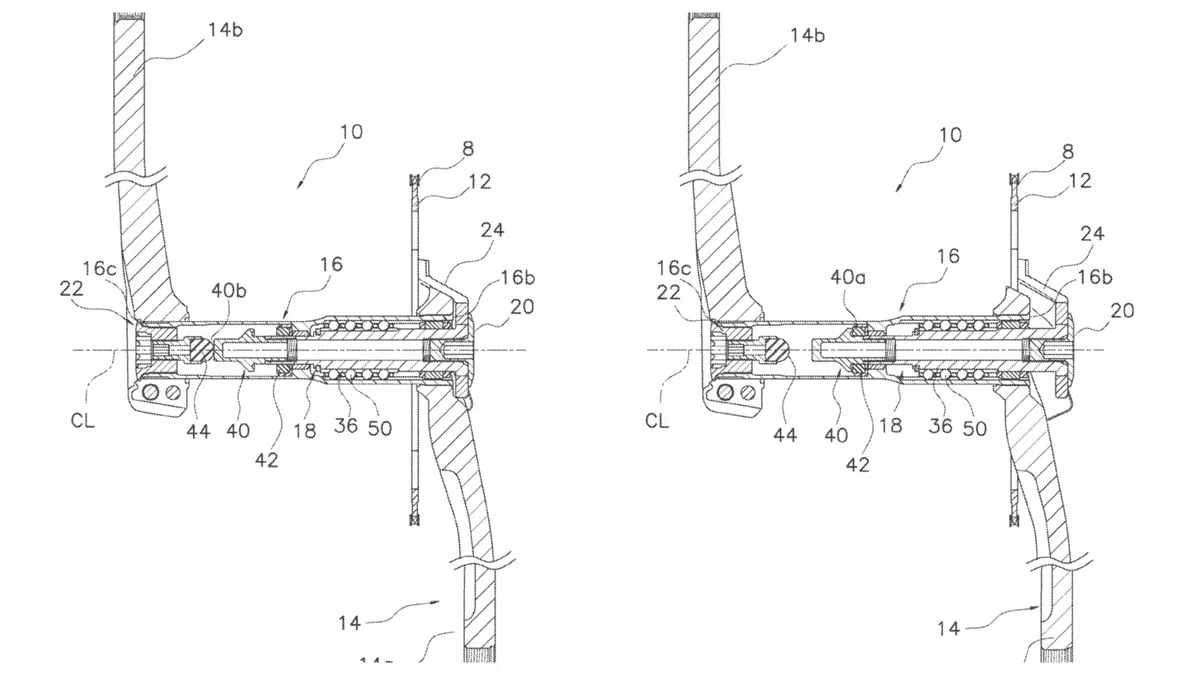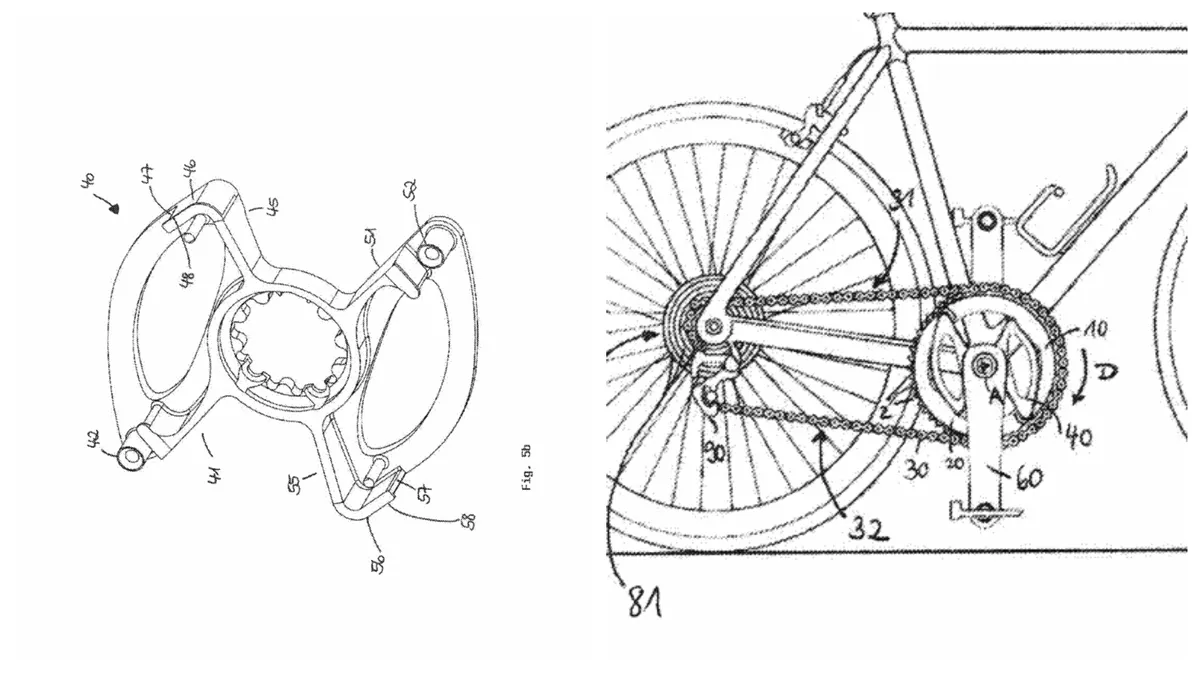Recently published patents from SRAM and Shimano have unearthed two attempts to improve the chainline of today’s 1x drivetrains. Both of these were originally spotted by the eagle-eyed folk over at cyclingindustry.news.
The documents, which were both originally filed in December 2015, show two very different methods of achieving what could make for quieter, more efficient and durable transmissions of the future.
- Wireless electronic shifting for all mountain bike 1x drivetrains. Yes, even yours
- The tyre everyone is talking about — Pirelli’s PZero Velo
The problem that both of these systems are trying to counteract is the extreme chain angle (or skew) that is involved with scaling a wide-range cassette using one fixed chainring.
Shimano’s approach

Shimano’s patent shows a chainset that sits on a sliding mechanism that allows the driveside chainring to move independently from its associated crank arm.
Dipping into the tech docs it seems that it has been introduced primarily to reduce the chance of the front sprocket dropping the chain at extreme chain angles.
SRAM’s approach

In a very different approach, SRAM has designed chainrings that themselves can adapt to an altering chainline. The chainrings are effectively split into two halves that can move slightly in a similar way to the links in a bicycle chain.
The chainring itself is then mounted on a special carrier or spider that will also allow for a certain degree of movement.

For those who want a closer look at the tech heavy docs and images that surround each patent you can: here is USPTO Application # 20170167542 by Shimano, and USPTO Application # 20170167590 by SRAM .
What does this mean for the future?
It’s clear from the popular and successful 1x drivetrains currently on the market that these technologies may not be strictly for today's 1x drivetrains, though these patents may point to several future developments.
For one, despite being very slow to react to SRAM's proliferation of 1x drivetrains, Shimano's patent demonstrates that the Japanese company is finally taking single chainring drivetrains seriously.
These patents may also signal that we're not done stacking cogs onto cassettes. Could we see Shimano roll out its adjustable chainline technology in a 12-speed XTR group? Will SRAM raise the stakes with a 13-speed drivetrain in a few years?
Time will tell how far the cog count goes. What is apparent from these patents is that both SRAM and Shimano are investing heavily in the future of wide-range 1x systems. If the introduction of SRAM’s budget-minded 1x12 GX Eagle group wasn't evidence enough, these documents make it clear that the front derailleur won’t play a leading role in future drivetrains, at least not when it comes to mountain bikes.
